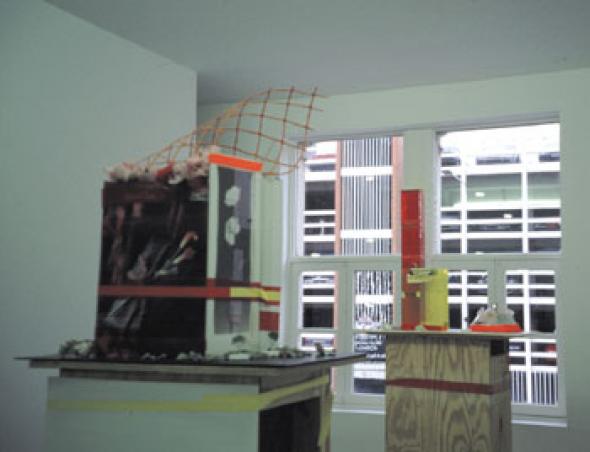Reading Recessions
Business as usual is the art world’s message du jour. Out and about, Jean Bernis finds that this survivalist tactic betrays a serious downturn all the same When Anthony d’Offay announced at the end of the summer that he would be closing his gallery, this meant, pertinently, that he had also elected not to develop his huge, empty Grade 1 listed building on Haunch of Venison Yard into another spectacular London art venue. Whilst his decision may have caused some nervousness to the trade, as Anthony Thorncroft noted recently in the Financial Times, could it really be understood on any level as indicative of a recession in the art market? D’Offay’s announcement was made a week before the World Trade Centre was hit, after which the rumours of a recession striking the art world became, unsurprisingly, more insistent.
Given that ‘recession’ (like terrorism) is such a heavily mediatised term, is there any way of realising how, or if, or where, it is actually taking place in any case? What is the mood in the contemporary art spaces? A Friday afternoon tour of some of the private galleries in the East London Creative Industry Corridor, which stretches plumply from Clerkenwell to Bow, suggested that whilst it was hard to see much business being done, visitor numbers remained buoyant. On the ground, there was still a non-buying public for the shows at least.
Whatever the financial climate, London’s newer, art-and-business alliance-riddled art economy constantly faces the challenge of not only maintaining sales and audience figures, but also of holding onto the symbolic potential of London’s art scene. This potential clearly exists beyond the physical space of the gallery, as well as beyond any concept of the national boundary that was constructed to promote the yBas, and it has been exploited effectively in the past to attract sponsorship and investment from large multinational companies. The americans. new art. exhibition currently at the Barbican, curated by London-based curator Mark Sladen, is supported by seven different major firms that the Barbican calls its ‘Arts Partners’, for example. Taken as a whole, it also features incredibly conservative artwork and, with its accompanying texts printed in a fun colour system developed by one of the artists, the show looks rather like a promotional exercise for a quaint American paint manufacturing company, in which the artworks feature as ingenious display models. The selected pieces mix weak identity politics with crafty neo-pop – a brew just tepid enough to seem ‘hot’ to the ‘Arts Partners’, one supposes.
The americans. new art. is billed as an exhibition that tries to go beyond the more shallow concerns of certain British artists. In their defence, on 12 October, the London Evening Standard’s ES magazine coughed up another index to the Brit Art monolith and published ‘The Art Issue’: A profile of Sir Nicholas Serota; a cabbie’s view of the Turner Prize; Tracey Emin in Vivienne Westwood – stop me if you’ve heard it all before. The overall effect was of a somewhat desperate effort, as if by courtesy of a PR company, to promote a laboriously reconstructed image of the 1997 British art world as contemporary and new. Recession or no recession, this is a strategy aimed to protect the value of the scene as much as the value of the artworks. In this light, my gallery tour of the East End had turned out to be both therapeutic and depressing. Isa Genzken’s exhibition at Magnani seemed to express the coexisting limits and freedoms of such a situation quite well, apart from being ready to approach aspects of the ‘inter-disciplinary’ alliance culture. Upstairs, she showed four models constructed from glass and called them ‘New Buildings for Berlin’ and, downstairs, she showed four models constructed from bits and bobs and called them ‘Fuck the Bauhaus’.
Jean Bernis <jeanbernis AT hotmail.com> is a stylist and writer
Mute Books Orders
For Mute Books distribution contact Anagram Books
contact@anagrambooks.com
For online purchases visit anagrambooks.com








